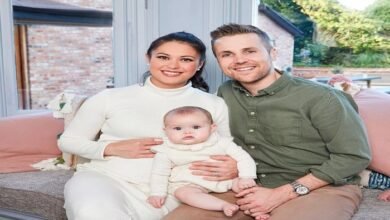
Introduction
In our daily interactions, the term “contexto” plays a significant role, yet it often goes unnoticed. Contexto refers to the circumstances, background, or setting in which a communication or event takes place. Understanding “contexto” is essential for interpreting messages correctly and responding appropriately. Whether in a business meeting, a classroom, or a casual conversation, the importance of contexto cannot be overstated. This blog post will explore the various dimensions of “contexto,” its relevance in different fields, and how mastering it can enhance your communication skills and decision-making abilities.
The Role of Contexto in Communication
Communication is a complex process, and contexto is a critical component that shapes the way messages are conveyed and interpreted. Without considering the contexto, messages can be misunderstood, leading to confusion or conflict. For instance, the same words can have different meanings depending on the contexto in which they are spoken. In this section, we will delve into how “contexto” affects verbal and non-verbal communication and why being aware of the surrounding circumstances is crucial for effective interaction.
Contexto in Cultural Understanding
Cultural differences significantly influence how contexto is perceived and interpreted. What is considered appropriate in one culture may be seen as rude or unusual in another. Understanding “contexto” in a cultural sense involves recognizing these differences and adapting your communication style accordingly. This section will explore how contexto varies across cultures and the importance of cultural sensitivity in global interactions. By mastering the cultural contexto, you can avoid misunderstandings and build stronger, more respectful relationships with people from diverse backgrounds.
Contexto in Decision-Making
Decision-making is another area where contexto plays a vital role. Every decision we make is influenced by the surrounding contexto, whether it’s personal, professional, or societal. Understanding the contexto allows us to make informed choices that are appropriate for the situation. In this section, we will discuss how considering the contexto can lead to better decision-making outcomes. We will also explore how ignoring contexto can result in poor decisions with unintended consequences.
Contexto in Business Strategy
In the business world, contexto is key to developing successful strategies. A business strategy that works in one market may not be effective in another due to differences in contexto. Understanding the contexto of the market, competitors, and consumers is essential for crafting strategies that resonate with the target audience. This section will examine how “contexto” influences business decisions and the importance of conducting thorough contextual analysis before implementing strategies.
The Psychological Aspects of Contexto
The human mind is deeply influenced by the contexto in which it operates. Our perceptions, thoughts, and behaviors are all shaped by the contexto surrounding us. Understanding the psychological aspects of “contexto” can help in predicting how people will react in different situations. This section will explore the cognitive processes involved in interpreting contexto and how this understanding can be applied in fields like marketing, education, and human resources.
Contexto in Education
In education, contexto plays a significant role in shaping how students learn and how teachers teach. The educational contexto includes factors like the classroom environment, cultural background of students, and the societal expectations surrounding education. Understanding this contexto helps educators tailor their teaching methods to meet the needs of their students. In this section, we will explore how “contexto” influences the learning process and the importance of contextualized teaching in achieving educational goals.
Contexto in Technology and Innovation
Technology and innovation do not exist in a vacuum; they are deeply influenced by the contexto in which they are developed and used. The success of a technological innovation often depends on how well it fits into the existing contexto. This section will examine how “contexto” affects the development, adoption, and impact of new technologies. We will also discuss the importance of understanding the contexto when introducing technological solutions to ensure they meet the needs and expectations of users.
Contexto in Literature and Art
In literature and art, contexto is crucial for interpreting and appreciating works. The contexto in which a piece of art or literature is created and consumed can significantly influence its meaning and reception. This section will explore how understanding the historical, cultural, and social contexto of a work of art or literature can deepen our appreciation and interpretation of it. We will also discuss how artists and writers use “contexto” to convey messages and evoke emotions.
The Impact of Ignoring Contexto
Ignoring contexto can lead to misunderstandings, mistakes, and failures. Whether in communication, decision-making, or strategy development, failing to consider the contexto can have serious consequences. In this section, we will examine real-world examples of what happens when contexto is ignored. We will also discuss how to avoid these pitfalls by always considering the contexto in your actions and decisions.
Tools and Techniques for Analyzing Contexto
Understanding and analyzing contexto requires specific tools and techniques. This section will introduce various methods for assessing and interpreting contexto in different situations. Whether you are analyzing a business market, a social situation, or a piece of literature, having the right tools to understand the contexto is essential. We will explore techniques such as contextual inquiry, cultural analysis, and situational awareness that can help you master the art of understanding contexto.
The Future of Contexto in a Globalized World
As the world becomes more interconnected, understanding “contexto” becomes even more critical. In a globalized world, we encounter diverse contexts that require us to be more adaptable and aware. This section will explore the future of “contexto” and its increasing importance in global communication, business, and social interactions. We will also discuss how technology and globalization are changing the way we understand and navigate different contexts.
Conclusion
Contexto is an essential aspect of every interaction, decision, and strategy. Understanding “contexto” allows us to communicate more effectively, make better decisions, and navigate the complexities of a globalized world. Whether in business, education, technology, or art, the ability to analyze and interpret contexto is a valuable skill that can lead to success in various fields. By paying attention to the contexto, we can avoid misunderstandings, build stronger relationships, and make more informed decisions. As we move forward in an increasingly interconnected world, mastering the art of understanding “contexto” will be more important than ever.
FAQs
1. What is contexto?
Contexto refers to the circumstances, background, or setting in which a communication or event takes place, influencing how messages are conveyed and interpreted.
2. Why is contexto important in communication?
Contexto is crucial in communication because it shapes the meaning of messages and helps prevent misunderstandings by providing the necessary background for interpretation.
3. How does contexto affect decision-making?
Contexto affects decision-making by providing the surrounding circumstances that influence the choices we make, leading to more informed and appropriate decisions.
4. How can understanding contexto improve business strategies?
Understanding contexto in business helps in developing strategies that are tailored to specific markets, competitors, and consumer needs, leading to more successful outcomes.
5. What are the risks of ignoring contexto?
Ignoring contexto can lead to misunderstandings, poor decisions, and failures in communication, strategy, and relationships, as it overlooks the essential background information necessary for accurate interpretation.





